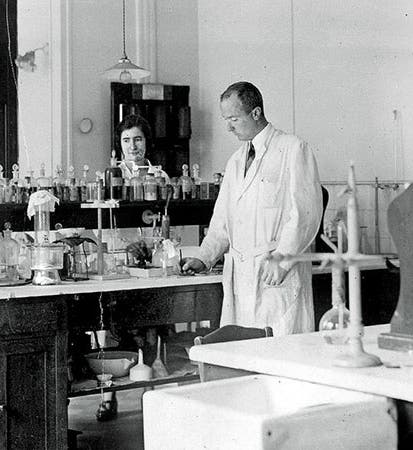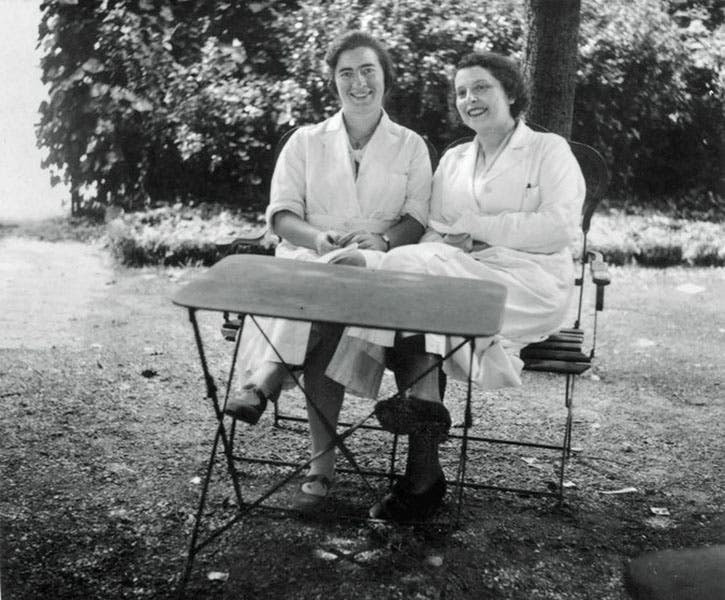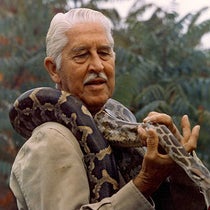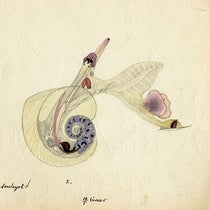Scientist of the Day - Marguerite Perey
Marguerite Perey, a French radiochemist, was born Oct. 19. 1909. Perey came from a middle-class family on the outskirts of Paris. She wanted to become a physician, but her family could not afford the cost. Instead, she attended a vocational school for laboratory technicians, graduating in 1929 with a specialty in chemical techniques. She was hired by Marie Curie to work in her Radium Institute in Paris. Curie was already a legendary figure in radiochemistry – Our Lady of Radium, as she was sometimes called – and she put Marguerite to work separating actinium from uranium ore. Actinium had been discovered by André-Louis Debierne back in 1899, one year after Pierre and Marie Curie had discovered radium and polonium. Marguerite’s task was to isolate and accumulate pure actinium, which was an incredibly laborious task, involving many different chemical operations. The hope was that when she had a sample of pure actinium, she could then look for daughter isotopes whose existence was not yet known. When Marie died in 1934, Debierne took over the lab (along with Marie’s daughter, Irène Joliot-Curie). Debierne had a vested interest in actinium, and he kept Perey working on it, in order to determine its exact half-life. Perey had become very good at her job, and she had grown so knowledgeable about actinium that she could immediately tell when something was not right with her chemical separations. In late 1938, she became aware that some of her actinium was giving off radiation that shouldn't be there. She got permission from Debierne to pursue this, and a few weeks later, in January of 1939, she announced that she had identified and isolated a new element. It had an atomic number of 87 and stood between radium and radon in the periodic table.
This was exciting stuff. When Mendeleev formulated his periodic table in 1869, there were only about 63 known elements, which means that there were many naturally occurring elements (we now know) yet to be discovered. Mendeleev had left empty spaces in his table where elements ought to be, and he even gave some of them names, such as eka-boron (an element below boron in the table, with properties similar to boron) and eka-silicon. Gradually these predicted elements were discovered and given names of their own, so that eka-boron became scandium and eka-silicon became germanium. By 1938, all the holes had been filled but two. One of these was eka-cesium, an element in the column with the alkali metals, such as sodium and potassium, but heavier than cesium. This is what Perey discovered: element no. 87, which she was given the privilege of naming, and she chose francium, after her native country, just as Marie Curie had called a new element polonium, after her native Poland. Marguerite Perey not only discovered a new element, she discovered the last naturally occurring element that there is (astatine, the last to be discovered in 1940, cannot be chemically extracted from the Earth’s crust). All elements discovered since then have been synthesized and do not occur in nature. That said, we must note that while francium occurs in nature, it does not do so occur very often. Because it is so radioactive – it has a half-life of about 22 minutes – it does not hang around long before decaying into radium or radon. It has been estimated that in the entire earth, there are, at any one time, but a few grams of francium scattered throughout, atom by distant atom. It is a rare earth indeed. Perey went to receive a PhD from the University of Paris (for her discovery of francium) and became a professor of nuclear chemistry in Strasbourg. She did not receive a Nobel Prize for her discovery, but she received a much scarcer award, for someone of her gender: in 1962, she was elected to the French Academy of Sciences. Hard as it is to believe (maybe not so hard, unfortunately), the French Academy had never admitted a woman to its ranks in its nearly 300 years of existence. Even Marie Curie was not elected to membership. Marguerite Perey was the very first woman to become an Academician, even though she was considered a corresponding member and did not have full membership status. As surprising as that is, we should note that the Royal Society of London did not elect a woman as a fellow until 1945. The Institute of Sciences of Bologna, on the other hand, had invited Laura Bassi to join its ranks in 1750. Good for Italy, even if there was no Italy yet. Several photos were taken of the employees of the Radium Institute Lab in 1930, when Marguerite was only 21 years old. In the first photo, she is the woman on the right in the back; the woman on the left is Sonia Cotelle, assistant to Debierne. In the second photo, we see Sonia and Marguerite sitting outside; this time, Marguerite is on the left. Sadly, both Sonia and Marguerite developed cancer, as a result of years of handling radioactive materials. Sonia died first, in 1945; Marguerite lasted 30 years longer, but she was unable to work after 1960 due to a slowly spreading bone cancer. It was a fate suffered by all too many early investigators into radiochemistry. Dr. William B. Ashworth, Jr., Consultant for the History of Science, Linda Hall Library and Associate Professor emeritus, Department of History, University of Missouri-Kansas City. Comments or corrections are welcome; please direct to ashworthw@umkc.edu.






